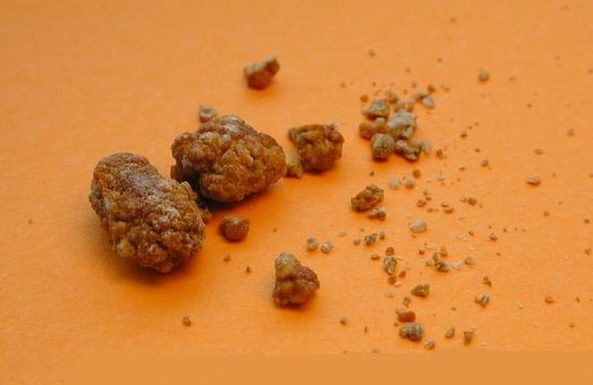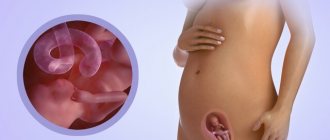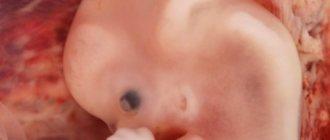2. Questions during diagnosis
During your appointment, your doctor may ask you a variety of questions:
Questions about your lifestyle
How much fluid do you drink per day? How much water do you drink? The fact is that the most common cause of kidney stones is lack of water.
Do you drink grapefruit juice? Grapefruit juice increases the risk of kidney stones.
How active do you lead? Do you exercise or play sports? What type of work do you have: sedentary or mobile? People who do not lead an active lifestyle are most likely to develop kidney stones. However, those who lead an active lifestyle and do not drink enough fluids also have a high chance of developing kidney stones.
What kind of food do you eat? Many foods can contribute to the formation of kidney stones. These include:
- Foods high in oxalate: dark green vegetables, chocolate, legumes;
- Foods high in vitamin C or D, as well as vitamin supplements containing them;
- Food that is too salty;
- Foods high in animal protein, such as beef.
Questions regarding medications and other medical conditions
What medications do you take? Some medications contribute to the formation of kidney stones.
What diseases did/do you have? The list of diseases that affect the formation of kidney stones includes:
- Gout;
- Frequent genitourinary infections;
- Thyroid diseases;
- Inflammatory bowel diseases;
The doctor may also be interested in any cases of such diseases in your close relatives.
Other factors influencing the appearance of kidney stones include previous operations on the abdominal organs.
Visit our Nephrology page
Why do kidney stones appear?
Currently, the mechanism of development of the disease and its causes have not yet been fully studied. There are several versions explaining the stages of stone formation.
Currently, the mechanism of development of the disease and its causes have not yet been fully studied. There are several versions explaining the stages of stone formation.
Experts identify the following factors for urolithiasis:
- External.
The likelihood of developing pathology increases if a person leads a sedentary lifestyle. This causes disturbances in the exchange of phosphorus and calcium. Dietary patterns with a predominance of sour and spicy foods and protein can also provoke the disease. Factors in the development of pathology are a lack of certain vitamins, taking a number of medications and harmful working conditions. - Local.
Pathology occurs when there are abnormalities in the development of the organs of the urinary system. The disease is often diagnosed in patients with inflammatory processes, a single kidney, or narrowing of the urinary tract - General internal.
The risk of stones increases with prolonged immobility, chronic pathologies of the gastrointestinal tract, poisoning, dehydration, metabolic disorders
In some cases, several risk factors for the development of urolithiasis are combined.
3.Medical examination and medical history
During a physical examination, your doctor may look for other indicators that may help explain your symptoms. In particular, the doctor may measure your body temperature, weigh you, and perform a manual examination of your abdomen or back to detect swelling; examine the groin area to check for enlarged lymph nodes.
Why do you need a medical history and physical examination?
Taking a detailed medical history and performing a physical examination will allow your doctor to know whether you currently have kidney stones and how likely they are to occur.
About our clinic Chistye Prudy metro station Medintercom page!
general description
Kidney stones are one of the manifestations of urolithiasis, in which the formation of calculi (stones) is observed.
Clinically, the disease is manifested by attacks of renal colic, lower back pain, the presence of pus and blood in the urine. Diagnosis of kidney stones is complex and includes a number of different studies. Treatment is conservative (melting stones using various drugs) or surgical, when stones are removed from the kidneys surgically.
Treatment of kidney stones
Treatment of nephrolithiasis is complex. Conservative methods of therapy include herbal medicine, physiotherapy, exercise therapy. In addition, water and electrolyte metabolism in the body is stabilized.
Anti-inflammatory drugs are prescribed without fail, as well as analgesics, diuretics, and medications that help melt stones and remove them from the patient’s body. Antibacterial therapy is carried out.
Treatment of kidney stones should only be carried out under the supervision of a specialist. Self-medication is unacceptable and can lead to the development of a number of serious complications.
Removal of stones is carried out using the following drugs:
- Cyston - suitable for removing any stones;
- Canephron N is a herbal medicine that is used to remove urate and oxalate stones;
- Uralit U - is prescribed for the removal of mixed and urate stones;
- Phytolysin - indicated for removing small stones.
If the course of the disease is complicated by the addition of an infection, the patient must be prescribed antibiotics. If drug treatment does not help, the patient may undergo non-surgical stone crushing.
The main methods of therapy are:
- Lithotripsy. It can be laser or remote. In the first case, an endoscope is brought to the stone and, under the influence of a laser, the kidney stones are crushed into sand, followed by excretion in the urine. With external lithotripsy, stones are exposed to waves of different frequencies, which also destroy the stones.
- Litholysis. The essence of this method of treating kidney stones is that they are dissolved by directly exposing the stones to medicinal solutions through a special catheter that leads into the renal pelvis. Litolysis can be descending or ascending. The first is used in the conservative treatment of nephrolithiasis, when taking special medications helps dissolve stones and remove their remains from the body along with urine. Ascending litholysis is usually performed in the postoperative period. The essence of the method is to introduce medicinal solvents directly into the renal pelvis through a special tube.
- Nephrolitholapaxy. This treatment method is used to remove large stones, the size of which reaches one and a half centimeters or more. The surgeon makes an incision in the kidney area, through which microinstruments and a special device (nephroscope) are introduced into the body. Then the stones are crushed, the instrument is removed from the body, and the incision is sutured.
- Ureterorenoscopy. Using this procedure, small stones are removed. The advantage of this method of treating kidney stones is that there is no need to hospitalize the patient. Stones are crushed using a special device that is inserted into the urethra. The procedure is carried out by a specially trained specialist. The method is suitable for removing small stones that are located in the kidneys, bladder, ureter, and urethra.
If all of the above methods for treating kidney stones do not help or the kidney stones are too large, then the patient may be prescribed surgical treatment.
Symptoms and clinical picture of kidney stones
Among the characteristic symptoms of kidney stones is pain in the lumbar region - renal colic. It can occur at any time for no apparent reason and is characterized by dull, aching pain. At the same time, the person shows concern and tries to find a position in which the pain decreases. Such attacks are constant and cramp-like in nature, lasting from several minutes to a day or more.
Other signs of kidney stones are the appearance of blood in the urine, nausea and vomiting, and in complicated cases, an increase in body temperature. In some cases, there is bloating in the abdomen, and pain spreads to the iliac and groin areas.
Which doctor treats kidney stones
As a rule, kidney stones are treated by a urologist. For lithotripsy and surgical removal of stones, surgeons with appropriate qualifications are involved. For individual indications, consultations with a nephrologist, therapist, oncologist, and endocrinologist are prescribed.
Diagnosis of kidney stones
Diagnosis of kidney stones begins with studying the patient's complaints. Then the urologist collects an anamnesis. In the process of communication, the doctor asks the patient whether he has previously had or currently has diseases of the urinary system, whether he has undergone surgery, and whether the disease is hereditary. Information about the localization and radiation of pain, dietary habits, and the use of certain medications is also clarified.
After this, a physical examination with palpation is required. By palpation, as well as with the help of light tapping, the doctor detects increased pain in the affected area, and sometimes an enlarged kidney. To confirm the primary diagnosis, tests for kidney stones and instrumental studies are prescribed.
Diagnostic methods
Diagnosis of the disease is carried out using the following laboratory and instrumental methods:
- clinical urine analysis - shows the presence of leukocyturia, the presence of red blood cells (hematuria) after painful attacks;
- general blood test - leukocytosis and accelerated ESR are recorded;
- biochemical analysis of blood and urine;
- coagulogram;
- Ultrasound - shows expansion of the pyelocaliceal system, the presence of stones;
- radiography - the size of organs is determined, shadows of stones, defects in the filling of the pelvis are identified;
- excretory urography and nephroscintigraphy - determine renal function disorders;
- computed tomography - the spatial location of stones (including the smallest ones) is determined.
Differential diagnosis is carried out in relation to acute appendicitis, pancreatitis or cholecystitis, intestinal obstruction, herniated disc, intercostal neuralgia, tumors, etc.
Causes of kidney stones
The exact causes of the disease are unknown. There are many theories with which scientists try to explain the causes of stone formation, but none of them provides answers to all questions.
There are a number of external and internal factors that can trigger the development of nephrolithiasis.
Exogenous factors include:
- unhealthy diet, excess animal protein in the diet;
- abuse of alcohol and caffeinated drinks;
- hypovitaminosis A, D;
- physical inactivity - leads to the development of stagnation in the body;
- uncontrolled use of certain medications;
- work in hazardous production;
- non-compliance with drinking regime;
- poor living conditions.
The main endogenous factors that can lead to the formation of stones:
- prolonged lying down due to severe somatic illnesses or injuries;
- increased leaching of calcium from bone tissue;
- oncological diseases;
- hereditary predisposition;
- developmental abnormalities of the urinary system;
- hormonal disbalance;
- diseases of the gastrointestinal tract;
- some inflammatory infectious diseases.
Diagnosis of kidney stones
The main methods for diagnosing the disease are:
- Collecting anamnesis, interviewing the patient. The doctor is interested in when the first symptoms of the disease appeared, whether the patient has passed stones in the past, whether there is blood in the urine, whether there have been kidney injuries, surgeries on the urinary organs, and so on.
- Inspection. With light blows to the lumbar region, the patient feels pain.
- Analysis of urine. The presence of red blood cells, casts and leukocytes is detected.
- Blood analysis. An increase in ESR and an increase in the number of leukocytes are detected, which indicates the presence of inflammation.
- Ultrasound of the bladder and kidneys. The size of kidney stones, their location, shape and structure are determined; with the help of ultrasound, all types of stones can be detected (and even those stones that are not detected during radiography).
- Cystoscopy. Examination of the inner surface of the bladder using a special device, a cystoscope.
- X-ray of the abdominal cavity.
- Dynamic scintigraphy. A series of photographs are taken; during the study, the patient is injected with a special radioactive substance, with the help of which the deterioration in the outflow of urine from the kidneys is detected and the functioning of the kidneys is examined.
- Excretory urography. This is an x-ray of the urinary tract and kidneys using a contrast agent.
- using a contrast agent. During the examination, images are taken layer by layer, at different depths, after which they are processed by a computer and displayed on the monitor screen, which allows the doctor to identify possible pathologies more accurately than with a regular x-ray. Using this study, the functional state of the kidneys, their mobility, contours, size, type, and location of stones are determined.
Symptoms of kidney stones
The clinical picture during an exacerbation of the disease is quite characteristic and it is not difficult for an experienced doctor to make a diagnosis based on it.
Most often, sand and kidney stones occur in men, but the clinical picture is brighter and more severe in women. Scientists explain this fact by the structural features of the female urinary system.
As long as the stone does not begin to move, the patient does not experience any suspicious symptoms. But as soon as the kidney stones begin to pass, the clinical picture becomes very clear.
The main symptoms of kidney stones include:
- arterial hypertension;
- pain in the distal abdomen;
- bloating;
- burning and pain during urination;
- attacks of nausea and vomiting that do not bring relief to the patient;
- cold sweat;
- severe pain in the lower back or side, in the kidney area;
- increased or delayed urination;
- the appearance of sand in the urine;
- frequent diuresis.
The main symptom of kidney stones is an attack of renal colic, which occurs as a result of blockage of the ureter and is manifested by sudden, very severe pain. The cause of pain is spasm and increased contraction of the muscles of the urinary tract.
Painful sensations can be so strong that a person ceases to control himself and constantly tries to find a body position in which the pain will become less severe.
Attacks may vary in frequency. Some patients experience colic once every few years, while others experience pain several times a month. The duration of the attack is usually 1-2 hours, but sometimes it can last for a day or more. After the attack ends, small stones or sand may come out in the urine.











